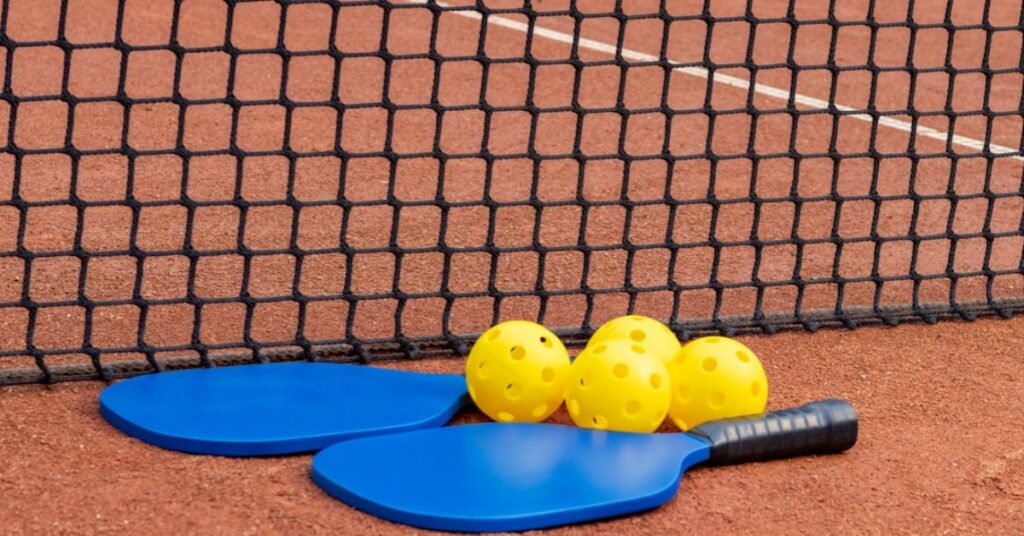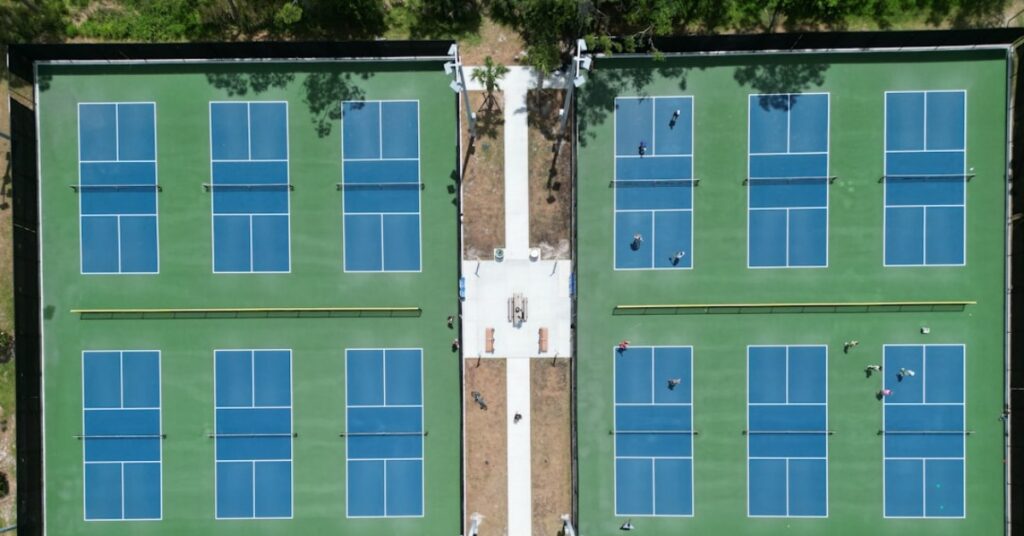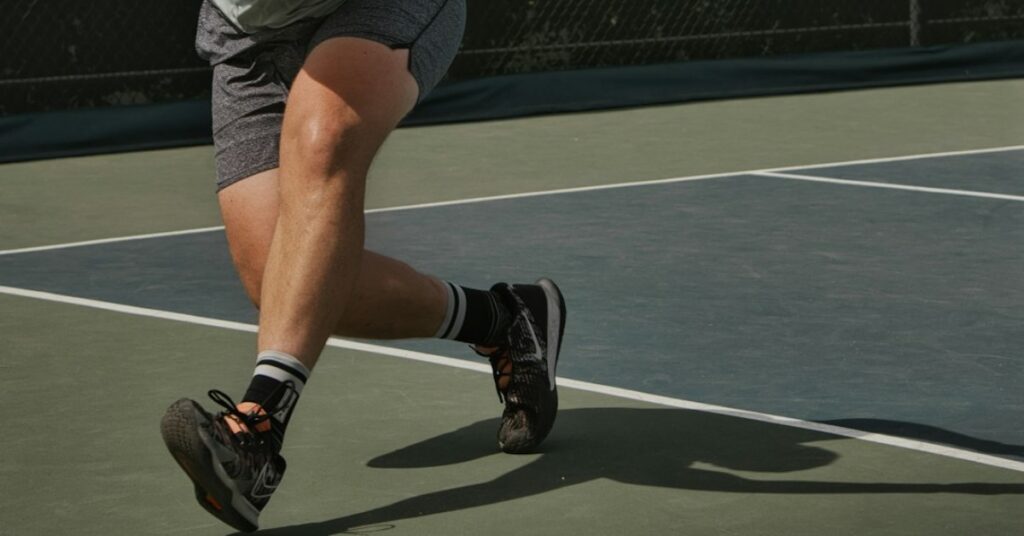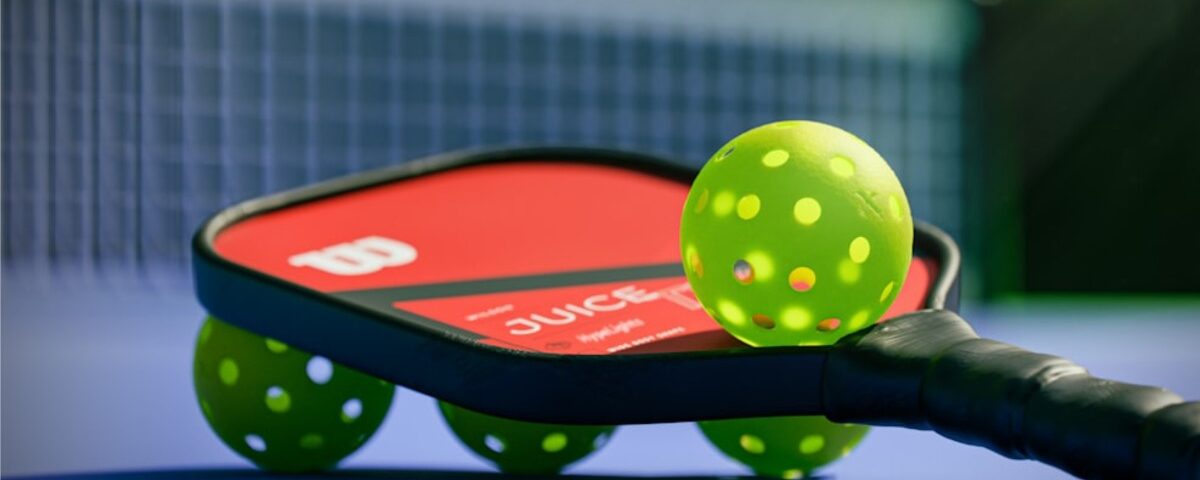Pickleball is blowing up, and if you’re not playing it yet, you’re missing out on the action. This isn’t just some trend—it’s a sport that’s evolving fast, pulling in everyone from casual players to serious competitors. The best part? Pickleball is for everyone, no matter your skill level. Just like everything in life, it’s changing the game—literally—and the way we approach it. Whether you’re in it for fun or aiming to master the court, Pickleball is where the future of sport is heading. Time to grab a paddle and get in on the hype!
- History and Origins of Pickleball
- The Growth and Popularity of Pickleball
- Essential Pickleball Equipment for Beginners and Pros
- Understanding the Basic Rules of Pickleball
- Pickleball Court Dimensions and Layout Explained
- Key Strategies and Techniques for Pickleball Success
- The Importance of Footwork and Positioning in Pickleball
- How to Choose the Right Pickleball Paddle
- Pickleball Tournaments: What to Expect and How to Prepare
- Pickleball Etiquette and Sportsmanship Guidelines
- To Conclude
- FAQs
History and Origins of Pickleball
Global Expansion
Pickleball is now played by millions worldwide, with growing professional leagues and tournaments.
Pickleball’s Popularity Surges
National and international pickleball associations were formed, increasing its visibility.
Formalization
A corporation was formed to protect the game’s integrity and formalize its rules.
Early Expansion
The game started spreading beyond Washington, gaining popularity in other regions.
Invention of Pickleball
Created by Joel Pritchard, Bill Bell, and Barney McCallum on Bainbridge Island, Washington.
Pickleball has an origin story that’s more than just quirky—it’s also a testament to the power of improvisation. The game was born in the summer of 1965 on Bainbridge Island, Washington, when three dads—Joel Pritchard, Bill Bell, and Barney McCallum—were looking to entertain their bored kids. With a badminton court, some ping-pong paddles, and a perforated plastic ball, they threw together a game that quickly caught on. What began as a family activity evolved into something much larger. Over time, they refined the rules and the game grew into what we know today as pickleball.
What’s truly fascinating is how organic the development of pickleball was. The name itself has sparked debate. Some say it was named after Pritchard’s family dog, Pickles, who would chase after stray balls. Others claim it references “pickle boat” crews in rowing, composed of leftover oarsmen, much like how pickleball borrows elements from various racket sports. No matter how it got its name, pickleball began to take shape, and before long, it wasn’t just a backyard game anymore. By the 1970s, the sport had already begun spreading beyond Washington.
Interestingly, pickleball was formalized in 1972 when a corporation was established to protect the game’s integrity. This was a key moment that cemented pickleball’s evolution from a casual pastime to a legitimate sport. As more people got involved, the rules were standardized, and courts designed specifically for pickleball started popping up. Fast forward to today, and it’s now one of the most rapidly growing sports in the world.
The Growth and Popularity of Pickleball
In recent years, pickleball has exploded in popularity. It’s hard to ignore the numbers. According to the USA Pickleball Association, there are now over 4.8 million players in the U.S. alone, with participation growing at an annual rate of nearly 40%. This growth can be attributed to a few factors. First, pickleball is accessible to all ages and skill levels. You don’t have to be a pro athlete to pick up a paddle and enjoy the game, which has attracted a wide range of players, from kids to seniors. To learn more about the sport’s growth and its organization, you can visit the USA Pickleball Association.
Another reason for its growth is the low barrier to entry. Pickleball doesn’t require expensive equipment or vast courts, making it easy for people to set up games almost anywhere. Many community centers, gyms, and even retirement homes have converted existing tennis courts or built dedicated pickleball courts, further boosting its reach. The game’s simple rules also help—it’s easy to learn but challenging to master, offering something for both beginners and seasoned players alike.
The rise of social media and online platforms has also played a significant role in pickleball’s popularity. Videos of intense rallies, tutorials, and even professional tournaments have made the sport highly visible. You can see it on YouTube, TikTok, and even on major sports networks now. Professional pickleball leagues are emerging, and high-profile athletes like tennis star Andre Agassi have sung its praises, bringing even more attention to the sport.
Essential Pickleball Equipment for Beginners and Pros
Whether you’re new to the game or a seasoned player, having the right equipment can make all the difference in your pickleball experience. Let’s start with the basics: the paddle. Pickleball paddles come in a range of materials, from wood to composite to graphite. Wooden paddles are the most affordable, making them ideal for beginners, while composite and graphite paddles offer better control and durability, which is why pros tend to use them. The weight and grip of the paddle should also be considered based on your playing style—lighter paddles offer more control, while heavier ones provide more power.

| Equipment | Description | Purpose |
|---|---|---|
| Paddle | Made from wood, composite, or graphite | Controls shot power and accuracy; wood is ideal for beginners, composite/graphite for pros. |
| Ball | Perforated plastic ball (indoor and outdoor types) | Indoor balls have larger holes and are softer; outdoor balls are harder with smaller holes. |
| Footwear | Court shoes with good grip and lateral support | Essential for quick movements, pivots, and reducing injury risk. |
| Accessories | Nets, court tape, protective gear | Enhances gameplay and player safety; used for setting up courts and personal protection. |
The ball used in pickleball is another crucial piece of equipment. It’s a perforated plastic ball, similar to a wiffle ball but slightly heavier. There are two types of balls: indoor and outdoor. Indoor balls have larger holes and are softer, which makes them easier to control, while outdoor balls are harder with smaller holes to withstand wind and other environmental factors. Choosing the right ball can significantly impact your performance, especially if you’re switching between indoor and outdoor games.
Footwear is often overlooked but is just as important as the paddle and ball. Since pickleball involves quick lateral movements and pivots, having a good pair of court shoes is essential for both comfort and injury prevention. Tennis shoes or other court shoes that offer good grip and support will help you stay agile on the court. And let’s not forget about accessories like nets, court tape, and protective gear, all of which can enhance your overall playing experience.
Understanding the Basic Rules of Pickleball
One of the reasons pickleball has gained such widespread appeal is its straightforward rules, making it easy for newcomers to jump right in. The game is typically played as either doubles or singles, but doubles is by far the more popular format. The court itself is about one-third the size of a tennis court, and the net is slightly lower. Games are played to 11 points, and a team must win by two. Points can only be scored by the serving team, which is a unique aspect compared to other racket sports.
| Rule | Description |
|---|---|
| Game Format | Played as singles or doubles, with doubles being more popular. |
| Scoring | Played to 11 points, win by 2; only the serving team can score points. |
| Serve | Underhand serve, must land diagonally in the opponent’s service area. |
| Double-Bounce Rule | After the serve, each team must let the ball bounce once on their side before volleys are allowed. |
| Non-Volley Zone (Kitchen) | 7-foot area near the net where players cannot volley the ball, adding a strategic element to play. |
The serve must be made underhand, and it’s crucial that the server’s feet stay behind the baseline until the ball is hit. Unlike tennis, where you can serve with power, pickleball serves are more about placement and strategy. After the serve, both teams must let the ball bounce once on their side before volleys can begin. This is known as the double-bounce rule, and it helps extend rallies and adds a layer of strategy to the game.
The “kitchen” is another rule that sets pickleball apart. The kitchen is a 7-foot area on either side of the net, where players aren’t allowed to volley the ball. This prevents players from dominating the net area and encourages more back-and-forth play from the baseline. Violating the kitchen rule results in a fault, which can be a game-changer in close matches. Understanding these basic rules can help you avoid common mistakes and set you up for success on the court.
Pickleball Court Dimensions and Layout Explained

| Court Element | Measurement | Description |
|---|---|---|
| Total Court Size | 20 feet (width) by 44 feet (length) | Standard size for both singles and doubles matches. |
| Net Height | 36 inches at sidelines, 34 inches at center | The net is lower in the middle to facilitate easier volleys and rallies. |
| Non-Volley Zone (Kitchen) | 7 feet from the net on both sides | Area near the net where players cannot volley, promoting strategic play. |
| Right/Left Service Areas | Divided equally into two halves | Each side of the court is split into two service areas, divided by the centerline. |
| Baseline | 44 feet in total length | The back boundary of the court, where players serve and stay positioned. |
| Sidelines | 20 feet in total width | The side boundaries of the court, which determine in/out for both singles and doubles. |
The layout of a pickleball court is critical to understanding how the game is played. A standard pickleball court measures 20 feet wide by 44 feet long, identical to a doubles badminton court. This compact size makes the game fast-paced and requires players to react quickly. The court is divided into two halves by a net that stands at 36 inches high at the sidelines and 34 inches at the center, creating a slight dip that allows for easier net clearance on serves and volleys.
Each half of the court is further divided into three main areas: the right service area, the left service area, and the non-volley zone, also known as the kitchen. The kitchen extends 7 feet from the net on both sides and is the most strategic part of the court. Players need to be mindful of their foot placement in this area, as stepping into the kitchen while volleying the ball results in a fault.
Interestingly enough, pickleball’s court dimensions allow for a game that’s both accessible and strategic. You don’t have to run far, but positioning is everything. Players often stay near the kitchen line to shorten their opponent’s reaction time while avoiding stepping into the non-volley zone. The court’s smaller dimensions also make it easier for players of all ages and fitness levels to stay engaged, which is one of the key reasons pickleball has grown in popularity.
Key Strategies and Techniques for Pickleball Success
Pickleball might be simple to learn, but mastering it requires a mix of strategy and technique. One key strategy is maintaining proper positioning on the court. Most advanced players stay close to the kitchen line after the serve, as this allows them to volley the ball more effectively and put pressure on their opponents. However, hovering near the kitchen also requires quick reflexes and precise control, as you can’t step into the non-volley zone while hitting the ball.
Another critical strategy is the “dink shot.” The dink is a soft shot that just clears the net and lands in the kitchen. This forces your opponent to either hit an awkward shot or step into the kitchen, which is illegal. Mastering the dink can dramatically shift the dynamics of the game in your favor, as it neutralizes aggressive opponents and encourages longer rallies.
Serve placement is also vital. Unlike in tennis, where serves can be powerful and aggressive, pickleball serves are about placement and spin. A well-placed serve to your opponent’s weak side can set the tone for the entire rally. Similarly, serving deep into the opponent’s court can keep them pinned to the baseline, giving you more control over the flow of the game.
| Strategy | Description |
|---|---|
| Positioning at the Net | Players often move quickly to the kitchen line after the serve to maintain control and apply pressure. |
| Dink Shot | A soft shot that lands in the kitchen, forcing opponents to play awkwardly or step into the non-volley zone. |
| Serve Placement | Focusing on strategic serves, often targeting the opponent’s weaker side to control the rally from the start. |
The Importance of Footwork and Positioning in Pickleball
Footwork and positioning are crucial elements that often separate beginner players from advanced ones in pickleball. Since the court is relatively small, quick lateral movements are essential for covering ground and maintaining a competitive edge. Proper footwork not only helps you stay balanced but also ensures you’re in the right place at the right time to return shots effectively.

When it comes to positioning, most players aim to reach the kitchen line as quickly as possible after the serve. This allows for more aggressive volleys and puts pressure on your opponent to hit more precise shots. However, positioning isn’t just about getting to the net—it’s about controlling the court. Advanced players often use positioning to force their opponents into uncomfortable situations, making them hit shots they’re not prepared for.
Additionally, pickleball demands a lot of pivoting and shuffling. You rarely stand still, so keeping your feet active and being ready to adjust to each shot is essential. Many players find that staying light on their feet and practicing quick directional changes help them stay one step ahead of their opponents.
How to Choose the Right Pickleball Paddle
| Paddle Type | Material | Benefits | Drawbacks |
|---|---|---|---|
| Wood Paddle | Wood | Affordable and durable, great for beginners. | Heavier, less control for advanced players. |
| Composite Paddle | Composite | Offers a good balance of control and power. | More expensive than wood paddles. |
| Graphite Paddle | Graphite | Lightweight and provides excellent precision. | Higher cost, less durable than composite. |
Selecting the right paddle can make a world of difference in your pickleball game. Paddles come in various materials, such as wood, composite, and graphite, and each offers distinct advantages. Wooden paddles are typically heavier and less expensive, making them perfect for beginners. However, if you’re looking for more control and power, composite or graphite paddles are the way to go. They’re lighter and more responsive, which can improve your shot accuracy and overall gameplay.
Weight is another factor to consider when choosing a paddle. Heavier paddles provide more power, but they can be harder to control, especially during long rallies. Lighter paddles, on the other hand, offer better maneuverability and control, but they may lack the power needed for certain shots. It’s essential to test out a few different paddles to find the right balance that suits your style of play.
Grip size is also crucial. A paddle with the right grip size will help you maintain better control and reduce the risk of injury. A grip that’s too small can cause you to over-grip, leading to fatigue, while a grip that’s too large can make it harder to handle the paddle with finesse. Finding the right paddle is a personal journey, but once you have the right one, you’ll notice an immediate improvement in your game.
Pickleball Tournaments: What to Expect and How to Prepare
If you’re considering stepping up your game and entering a pickleball tournament, there are a few things to keep in mind. Tournaments can be exciting, but they’re also competitive, and it’s essential to be well-prepared. The first thing to consider is your skill level. Most tournaments are divided into skill categories, so make sure you sign up for the appropriate division. If you’re new to tournaments, starting in the beginner or intermediate division will give you a better chance to succeed and have fun.
Once you’ve signed up, it’s time to practice. Tournaments are often fast-paced, so honing your skills beforehand is crucial. Focus on improving your serves, volleys, and dinks, as these are the most commonly used shots in competitive play. Additionally, working on your endurance is essential, as tournament matches can last much longer than casual games.
On tournament day, be prepared for a full day of matches. Bring plenty of water, snacks, and extra gear in case of equipment failure. The atmosphere at pickleball tournaments is generally supportive and friendly, but remember that it’s still a competition. Stay focused, play your best, and most importantly, have fun. After all, pickleball is all about enjoying the game while testing your skills against others.
For those in Canada, Pickleball Canada organizes a variety of tournaments at both local and national levels. To find upcoming tournaments and tips on how to participate, check out Pickleball Canada.
Pickleball Etiquette and Sportsmanship Guidelines
While pickleball is competitive, maintaining proper etiquette and sportsmanship is key to keeping the game enjoyable for everyone involved. One of the most important aspects of pickleball etiquette is calling lines fairly. Since there are no referees in most casual games, it’s up to the players to call balls in or out. Being honest and fair with your calls helps maintain a positive atmosphere on the court.
In addition to making fair line calls, good sportsmanship means being courteous to your opponents. This includes offering a firm handshake or a friendly paddle tap at the end of the game, regardless of the outcome. It’s also important to keep your temper in check during the game. Competitive matches can get heated, but losing your cool only takes away from the enjoyment of the sport for everyone.
Finally, be respectful of the court and equipment. Don’t hog court time, especially if others are waiting to play. Be sure to clean up after yourself and leave the court in good condition for the next group of players. By following these simple etiquette and sportsmanship guidelines, you can help ensure that pickleball remains the fun and friendly game that everyone loves to play.
| Etiquette Rule | Description |
|---|---|
| Calling Lines Fairly | Players make their own in/out calls, requiring honesty to maintain a positive atmosphere. |
| Sportsmanship | Display good behavior by shaking hands (or paddles) after the game, regardless of the result. |
| Respecting Court Time | Don’t hog the court, especially if others are waiting. Clean up after yourself to maintain the court’s condition. |
To Conclude
Pickleball is more than just a sport—it’s a community, a workout, and a game anyone can enjoy, regardless of age or skill level. From its humble beginnings to becoming one of the fastest-growing sports worldwide, pickleball has captured the hearts of millions. We’ve explored everything from its rich history and simple rules to essential strategies and the importance of choosing the right equipment. Whether you’re just getting started or aiming to compete in tournaments, pickleball offers endless opportunities for fun and improvement.
Now’s the perfect time to pick up a paddle and experience this dynamic sport for yourself. If you found this post helpful, leave a comment, share your thoughts, or pass it along to a friend who’s ready to jump into the pickleball craze!
FAQs
-
What is pickleball, and how is it different from other racket sports?
Pickleball is a paddle sport that combines elements of tennis, badminton, and ping-pong. It is played on a smaller court with a perforated plastic ball and paddles. The rules are simple, and the game is accessible to players of all skill levels, making it unique compared to other racket sports.
-
How do the rules of pickleball work?
Pickleball is usually played to 11 points, and only the serving team can score. The serve is made underhand, and both teams must let the ball bounce once before volleys can begin. There's also a "kitchen" or non-volley zone near the net, where players aren't allowed to hit the ball out of the air.
-
What are the key pieces of equipment needed to play pickleball?
To play pickleball, you need a paddle, a pickleball (which is a perforated plastic ball), and proper court shoes. Paddles come in various materials like wood, composite, or graphite, and the ball can be designed for indoor or outdoor play. Comfortable shoes with good grip are also recommended to prevent injury during quick movements.
-
Where can I find a pickleball court near me?
Pickleball courts are becoming more common at community centers, gyms, parks, and recreation facilities. You can also check with local pickleball associations or use online directories like USA Pickleball’s court locator to find courts near you.
-
How can I improve my pickleball game?
Improving your pickleball game involves practicing basic shots like the serve, volley, and dink. Focus on footwork and positioning, especially staying close to the kitchen line for volleys. Playing regularly and joining local pickleball leagues or tournaments can also help sharpen your skills.


